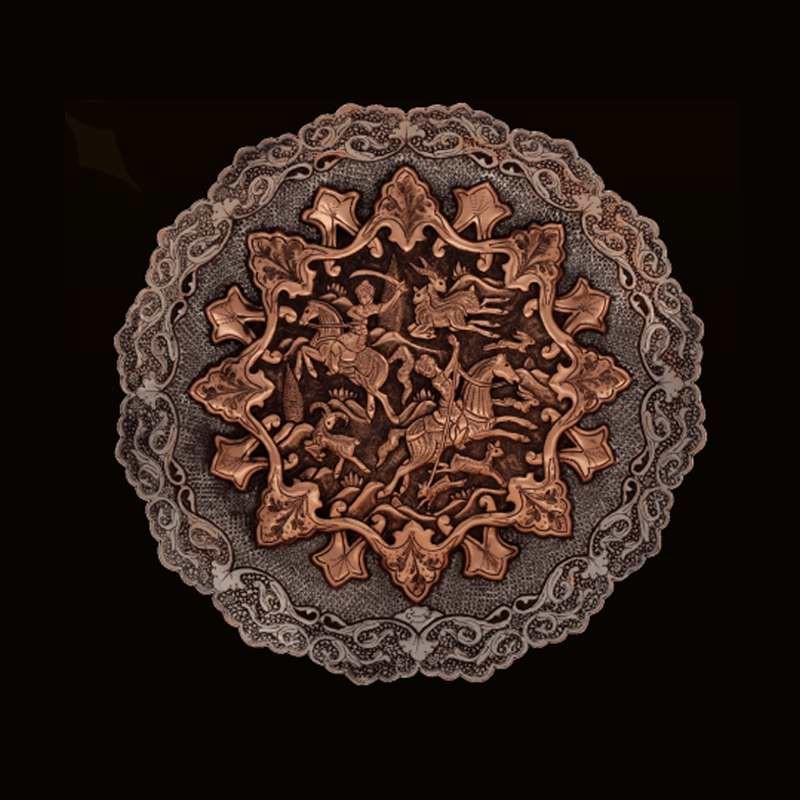Zoroastrian Fire Temples in Iran: All You Need to Know
The fire temple or Atashkadeh is a place of worship for Zoroastrians. In the fire temples, followers of Zoroastrianism made fire and performed their religious ceremonies. Since fire is a symbol of truth and light for Zoroastrians, there is an ever burning fire in the middle of all fire temples. The fire is a sacred element for Zoroastrians and they revere fire in different forms. There are many Zoroastrian Fire Temples in Iran and they have great information about Zoroastrianism and its traditions. Travel to Iran to discover the Zoroastrian fire temples.
In Zoroastrianism, human life indicates a struggle between good and evil, truth and deceit, light and darkness. That is why fire is sacred and respected as the symbol of truth and honesty. Though Zoroastrianism has roots in the 6th BC, it entered recorded history in 5th BC. There are some inscriptions indicating that Achaemenid kings were the followers of Zoroaster. Since making a new fire had been difficult in ancient times, Zoroastrian communities developed fire temples with ever burning fires. The fire keepers were responsible for keeping the fire burning. They covered the fire carefully with its ashes so that they could remove them in the morning. In this way, people did not have to make fires separately and they could take fire from the fire temples. As a result, fire temples became the necessary part of each community and fire keeping became a crucial profession. Later, the fire temples developed and were called Atash Gah in Persian. Moreover, they believe that fire and water are the elements of ritual purity.
Fire as a symbol of truth is a sacred element for Zoroastrians
The documents indicate that Zoroastrians had no temples until the 5thcentury BC and the people used to pray at homes or on the top of the hills. The fire temples were finally used by Zoroastrian communities. There are Zoroastrian temples dating back to the pre-Sassanid period; however, the majority of fire temples were constructed in the Sassanian dynasty. Today, the oldest remains of a fire temple is located on Mount Khajeh in Sistan,Iran. It belongs to the 3rd or 4th century BC.
The early fire temples were constructed in the form of Chahar—Taqi. Chahar-Taqi (four arches) had four pillars above which there was a dome-like structure. In fact, they were the rudimentary form of elaborate domes of the Islamic period. In other words, the construction of Islamic domes had roots in the Iranian-Zoroastrian structure called Chahar-Taqi (also called Char-taghi). Therefore, the pre-Islamic construction of Chahar-Taqi dates back to the Parthian Empire and the Sassanid Empire (approximately 3rd century BC). One of the oldest Chahar-Taqi structures –though just the ruins of it exist- is located in Jahrom and it dates back to the Parthian era. They were simple and open, and used as fire temples by Zoroastrians, especially during different assemblies.
Although the history of Zoroastrianism dates back to centuries BC, the glorious days of it refers to the Sassanian period (3rd to 7th AD). During their governance, Zoroastrianism found a specific place and it was announced as the official religion by the Sassanid kings. Therefore, great fire temples were made in that time. The ruins of many temples belonging to the Sassanid dynasty have been found in different parts of Iran, especially in Fars and Kerman provinces. It is interesting to know that during the Sassanid dynasty, there were three highly significant fire temples in Iran: Azar Goshnasb, Azar Barzin Mehr or Azar Borzin Mehr, and Azar Faranbagh. Each of the fire temples belonged to a special society class and it was believed that Ohrmazd had created the three of them to protect the world. The fire temple of Azar Goshnasb belonged to kings and armies, the fire temple of Azar Franbagh belonged to the priests, and the fire temple of Azar Borzin Mehr belonged to the farmers.
Azar Franbagh Temple located in Fars province belonged to the priests
The characteristic feature of the Sassanid fire temples referred to their domed sanctuary where the fire-altar stood. The sanctuary had a square ground plan with pillars at corners to support the dome (the gombad or Gonbad in Persian). Moreover, brick, stone, and wood were the basic elements applied to build the temples in that period.
Azar Franbagh Temple, located in Fars province, belonged to the priests. It was one of the most important fire temples constructed in the Sassanid Era. Since it was close to Karian village, it was also known as Karian Fire Temple. Since the fires of other fire temples were provided by the fire brining in the three great temples of the Sassanid period, Azar Faranbagh was also used to supply the required fire of other temples. After the Muslim conquest of Persia, the fire burning within the fire temple was transferred to Yazd. Today, it is still burning in Yazd Fire Temple.
Azar Goshnasb is also one of the three greatest Zoroastrian fire temples located in West Azerbaijan close to Takab. In the Sassanid period, it belonged to the kings and they used to go there before crowning and they granted so many gifts there. However, the history of Azar Goshnasb might date back to the late Parthian period. The Zoroastrian fire temple of Azar Goshnasb is located on the archeological site of Takht-e-Soleyman inscribed on UNESCO’s World Heritage List.
Literally, Azar Goshnasb meant “the fire of warrior kings” and it acted like a fortified fortress surrounded by high walls and many gates. Moreover, Azargoshnasb was constructed around a volcanic lake on the top of the mountain. One of the specific features of Azar Goshnasb was the type of fire burning within it. Atash Bahram, as one of the most sacred fires among Zoroastrians had been burning in Azar Goshnasb for many years.
Fire temple of Azar Goshnasb is located in the archaeological site of Takht-e-Soleyman
In comparison with other ancient temples of Iran, the history of Azar Goshnasb is more clarified for two reasons. The first refers to its location in the North West of Iran close to the western frontier of the country. As a result, more foreign visitors noticed its greatness. The second refers to the importance of it for Sassanid kings as a sacred place to take an oath and ascend the throne. Ferdowsi, as a great Persian Poet, described the temple of Azar Goshnasb in his Epic of Kings (Shahnameh). Though it had been one of the famous sites of the ancient times of Iran, it faded away after the 12th century till it was rediscovered in the 19th century.
The fire temple of Azar Borzin Mehr belonged to farmers and it was also recognized as one of the three great temples in the Sassanid period. It is located on the Reyvand Mountain (Rivand) in the province of Khorasan. Azar Barzin Mehr was highly respected by Zoroastrians in the Parthian and Sassanid dynasties. The temple of Azar Borzin Mehr also had the structure of Chahar Taqi.
Zoroastrianism declined after the Muslim conquest of Persia in the 7th century. Today, the majority of Zoroastrians of Iran live in Yazd and some of them also live in cities such as Tehran and Isfahan. Therefore, one could find Zoroastrian fire temples in Tehran, Isfahan, and other cities of Iran; however, a majority of them are located in Yazd province. Therefore, a person who travels to Yazd could visit Yazd Atashkadeh as well as the village of Chak Chak in Ardakan County, as two important places for Zoroastrians.
Pir-e-Sabz Fire Temple
Yazd Fire Temple (Yazd Atashkadeh) is located in Yazd and it houses Atash Bahram. The building of the fire temple was made in 1934. Zoroastrians usually gather together in the Yazd Fire temple for different ceremonies. They must wear white or light colored clothes to enter the fire temple; however, tourists are allowed to enter the fire temple as an attraction located in Yazd without wearing light-colored clothes. The fire burning in Yazd temple is believed to have been burning since 470 AD.
The village of Chak Chak, known as Pir-e-Sabz, is also a pilgrimage place for Zoroastrians. It is located near Ardakan County in Yazd province. It includes a Fire Temple known as Pir-e-Sabz Fire Temple on the mountain that annually attracts many Zoroastrians in June to have a religious festival.
Are you planning to travel to Iran? Check out our Iran tours.































